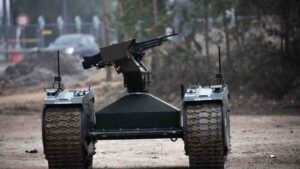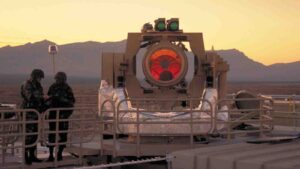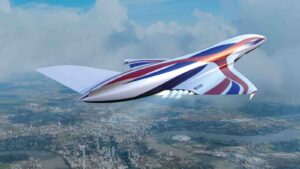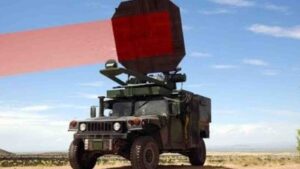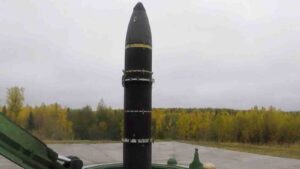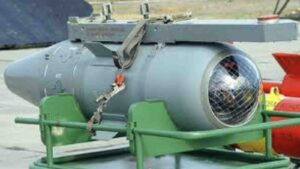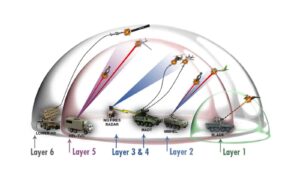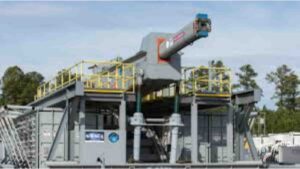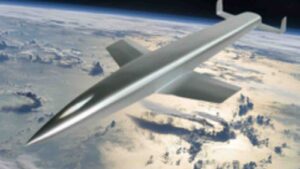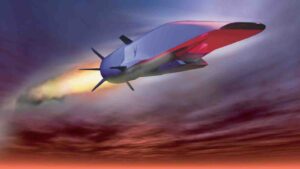Weapons of the Future
Summary
The Top 15 Weapons of the Future will blow your mind! We’ve come a long way since sticks and stones, and it’s almost inconceivable that only a few hundred years ago, man was still waging war with bows, arrows, cannons, […]

The Top 15 Weapons of the Future will blow your mind! We’ve come a long way since sticks and stones, and it’s almost inconceivable that only a few hundred years ago, man was still waging war with bows, arrows, cannons, and muskets. Modern militaries are constantly in the process of developing new weapons, some of which will definitely make some mouths drop. We thought it would be fun to take a closer look at the most amazing offensive and defensive weapons currently in the works.
Video: Weapons of the Future
Autonomous weapons
These are robotic vehicles, under development, that search and destroy enemy troops and equipment on the ground or in the air without risk to friendly troops—theoretically.
Onboard computers interpret sensor data to identify and target hostile forces with built-in weapons. Robots may query human controllers at remote sites for the go-ahead to fire, and friendly forces may carry transponders that identify them as “friends.”.
Difficulty of quickly and reliably discriminating between hostile forces and neutral or friendly parties or objects, such as civilians, cows, trees, and tractors. Systems that check with human controllers are vulnerable to communication failures. Malfunctioning robots could fire wildly at anything.
Video: Weapons of the Future
High-energy lasers
These are powerful energy beams that travel through air or space in straight lines. They travel at the speed of light and can strike over distances of thousands of kilometers.
Large mirrors focus powerful laser beams onto a small spot on the target. The heat produced burns through the surface of the target, disrupting flight, disabling warheads, or igniting fuels or explosives.
It needs much more energy to do damage than bullets, which destroy targets with their momentum. Powerful lasers need fuel or electrical power and are also very bulky (the US Airborne Laser fills a Boeing 747). Traveling through air and turbulence can disperse the energy of the beam.
Space-based weapons
Space is the ultimate high ground, so weapons in orbit would have the ability to see and zap anything on the ground, in the air, or nearby in space.
The main mission of space-based weapons would be to defend against ballistic missiles fired at targets on Earth. Fleets of interceptors or battle stations would be stationed in orbit, poised to fire at any attacking missiles. The leading approach now is solid projectiles—such as tungsten rods—that would impact missiles. But laser battle stations are also under consideration.
The technology is immature. Reaction times must be very fast. Interceptors must hit warheads to destroy them, which is difficult. Lasers also need chemical fuel or electrical power, which is not readily available in space.
Hypersonic aircraft
Launched from a standard runway, a hypersonic aircraft could fly faster than Mach 5 to strike anywhere in the world within two hours. It would also have enough thrust to deliver a satellite to low-Earth orbit.
To get off the ground from a runway, a hypersonic plane would either hitch a ride on a conventional plane or have its own conventional jet engine. That engine would carry the hypersonic craft to an altitude where air density and resistance are less. Here it would reach supersonic speeds and then shift to its scramjet engine. The scramjet scoops up air and mixes it with fuel so it burns as the mixture flows through the engine at supersonic speeds. This means scramjets can achieve some of the speed of a rocket without having to carry heavy oxidizer (to mix with fuel), as rockets do.
The technology is immature, with many engineering issues unresolved. Scramjet engines cannot start until the plane flies faster than the speed of sound. Plus, hypersonic flight has so far only been demonstrated for small unpiloted craft carried to high speed by other vehicles, and other planned experimental craft are too small to carry a pilot.
Read More: incredibly futuristic weapons and modern fighting vehicles
Active Denial System
Millimeter-wave or microwave beams supposedly make people flee without injuring them. They might typically be powered by a generator fitted to a Humvee in crowd control situations.
A 2-meter antenna and mobile generator produce and aim a beam of 95-gigahertz (3-millimeter) radiation. The top 0.3 mm of skin absorbs millimeter waves, causing intense pain within five seconds, so people flee quickly if they can.
Serious injury is possible if people cannot escape from the beam; skin burns within minutes. The beam also superheats metal objects like coins, earrings, or spectacle frames, which can then burn skin.
Nuclear missiles
Nuclear missiles are able to deliver unmatched destructive power anywhere in the world, making them the ultimate level of military power.
One or more nuclear warheads are mounted on a ballistic missile and launched vertically. The rocket burns out in the upper atmosphere, then coasts to its programmed destination, where the bomb descends and explodes.
These weapons are so frighteningly destructive that they have never been used in war (the Hiroshima and Nagasaki bombs, which had much less destructive power, were dropped from aircraft). Plus, the launch site and trajectory are easy to identify, inviting retaliation in kind from the target nation.
Stun guns (tasers)
Tasers disable people with bursts of high-voltage electricity, allowing police to subdue them without lasting injury.
A special gun fires darts on wires. These deliver a pulse of electricity that temporarily disrupts control of voluntary muscles. Police target bodies or legs to avoid vulnerable areas such as the head and neck. Without muscle control, people fall to the ground.
Tasered people may be injured when they fall to the ground. Darts can injure the throat, eyes, or genitals. Pulses can cause muscle spasms or seizures, and deaths have been reported. One pulse does not stop all people, and there have been allegations of misuse of stunguns and claims of their use in torture.
E-bombs
High-power microwave pulses can knock out computers, electronics, and electrical power, crippling military and civilian systems.
A rapid increase in electromagnetic field strength during a pulse induces surges of electric current in conductors. This burns out electrical equipment—semiconductor chips are particularly vulnerable. Special bombs generate the most intense pulses, covering large areas, but unmanned aircraft carrying smaller generators can pinpoint targets.
The effects can depend on local conditions and are hard to predict. Sensitive enemy military equipment can be shielded, and microwaves also disable friendly electronics within range.
Layered missile defense
Layered missile defense offers the best chance to shoot down attacking ballistic missiles.
Multiple anti-missile systems are deployed to target ballistic missiles during different stages of the attacking missile’s flight: (1) The boost phase, while the rockets firing engines make it easy to spot; (2) Mid-course, while the warhead coasts in space; and (3) The terminal phase, as it approaches the target. Each phase, or layer, of defense increases the chance of successful destruction of the missile.
Depends on the efficiency of each layer. The system is very expensive to build, test, deploy, and maintain. The initial boost phase is easiest to target but requires extremely fast reaction times.
Information warfare
This technique interferes with the flow of information vital to enemy operations while defending friendly channels of communication.
Information warfare specifically targets communication networks and computers. Expert computer hackers, called crackers, might break into or overload military computers and networks or spread computer viruses. Jammers might also block radio and television transmissions. Misinformation is circulated deliberately.
The US relies more on computers and communications than most of their potential adversaries, making the technique a potential threat to them and of limited use against low-tech opponents. Both sides are also vulnerable to misinformation.
‘Hyper Stealth’ or ‘Quantum Stealth’
Using naturally occurring metamaterials, scientists have been designing lightwave-bending materials that can greatly reduce the thermal and visible signatures of a target. The science behind it is relatively straightforward, though skepticals remain unconvinced and say they will believe it when they don’t see it: The “adaptive camouflage” renders what lies behind the object wearing the material by bending the light around it.
The military implications of such developments are self-evident, as “invisibility cloaks” would make it possible for fighters—from ordinary soldiers to special forces—to operate in enemy territory undetected, or at least buy them enough time to take the initiative. Such capabilities would reduce the risk of casualties during military operations while increasing the ability to launch surgical and surprise attacks against an opponent or conduct sabotage and assassination.
Electromagnetic Rail Guns
EM rail gun launchers use a magnetic field rather than chemical propellants (e.g., gunpowder or fuel) to thrust a projectile at long range and at velocities of 4,500 mph to 5,600 mph. Technology under development has demonstrated the ability to propel a projectile at a distance of 100 nautical miles using 32 megajoules.
The extended velocity and range of EM rail guns provide several benefits both in offensive and defensive terms, from precision strikes that can counter even the most advanced area defense systems to air defense against incoming targets. Another advantage of this technology is that it eliminates the need to store the hazardous high explosives and flammable materials necessary to launch conventional projectiles.
Space Weapons
Despite international pressure against the weaponization of space, major countries continue to explore technologies that would turn the sky above us into the next battleground. The possibilities are as limitless as they are outlandish, from moon-based missile launchers to systems that would capture and redirect asteroids towards a target on the surface of the Earth. Evidently, not all scenarios are technically feasible and will forever remain the stuff of science fiction novels. But some breakthroughs are within the grasp of current science and would have a deep impact on the nature of warfare as we know it.
One possibility is the arming of space orbiters with nuclear or non-nuclear electromagnetic pulse (EMP) weapons. By detonating a satellite-launched EMP weapon at a high altitude, a belligerent could initiate a decapitation attack against an enemy’s electrical grids, satellites, as well as the command, control, communications, computers, intelligence, surveillance, and reconnaissance (C4ISR) architecture that are necessary to conduct military operations. Depending on the size of the EMP weapon utilized, the attack could blanket an entire country or be more surgical, targeting an area of operations. An “assassin’s mace” weapon of this type could theoretically end war before a single shot is fired—at least against a heavily information-reliant adversary such as the U.S. (much less so against, say, the Taliban or Hamas).
Hypersonic Cruise Missiles and ‘Prompt Global Strike’
Had hypersonic cruise missiles existed in the mid-1990s, the U.S. might have rid itself of Al Qaeda leader Osama bin Laden much earlier than it did and would have accomplished the feat in Afghanistan rather than in Pakistan.
With their ability to accurately deliver warheads over long distances, cruise missiles have had an extraordinary impact on modern warfare. But in an age where minutes can make a difference between defeat and victory, they tend to be too slow. It took eighty minutes for land-attack cruise missiles (LACM) launched from U.S. ships in the Arabian Sea to reach Al Qaeda training camps in Afghanistan in 1998 following the terrorist attacks against U.S. embassies in Kenya and Tanzania. Using hypersonic missiles cruising at speeds of Mach 5+, the same targets would have been reached within as little as 12 minutes, short enough to act on intelligence that had placed the terrorist mastermind at the location.
Read More: Cute Kids Aged Horribly and Ruined Their Career!
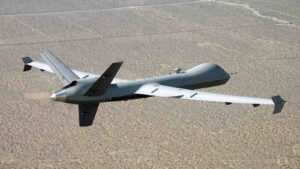
©unmannedsystemstechnology.com
Sentient’ Unmanned Vehicles
Perhaps the single-most important development in the defense industry in the past decade is the emergence of unmanned vehicles. As the technology evolves, drones, as they are often called, are quickly taking over duties that have traditionally been the remit of human beings. Such has been their rise that some commentators have argued that unmanned aerial vehicles (UAV) could one day render human pilots obsolete.
But today’s drones, from bomb-removal buggies to undersea mini-subs, from ship-based surveillance helicopters to high-altitude assassination platforms, remain dumb and for the most part require a modicum of human intervention. Not only are most platforms piloted remotely by human beings (though with increasing automation), but key mission elements, such as target acquisition and the decision to fire a Hellfire missile at a target, continue to necessitate human supervision.
Among this, which one seems most terrible to you? Let us know in the comment section.
